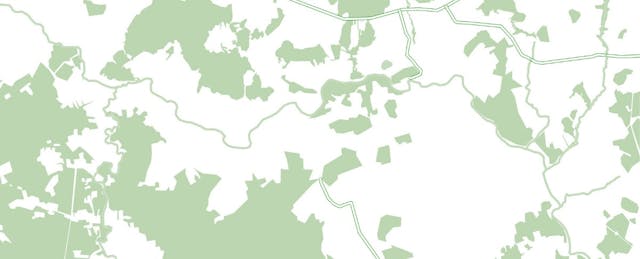Over the past decade, the number of international students earning bachelor’s degrees at U.S. colleges and universities has increased by 73 percent. Much of this growth has been concentrated at the most selective institutions, which already attracted numerous international students due to their global reputation and ranking. At this point, many have already reached their limit—either from a physical capacity standpoint or the universities perception of the limit to maintain selectivity and rankings. Meanwhile, the winds of demography and globalization that blew these students to U.S. shores are not letting up; over the next decade, the number of students studying outside their home country is expected to increase from about 5 million to 8 million.
While Harvard, Yale and Stanford may not be interested in actively recruiting additional international students, thousands of American schools facing declining enrollment and budgetary pressures see the opportunity. With only 4 percent international enrollment in U.S. colleges and universities (vs. 18 percent in both the UK and Australia), the U.S. has by far the highest growth potential among developed countries. Education is Australia’s largest services “export” sector, contributing 1 percent of GDP. If the U.S. could generate 1 percent of GDP from selling higher education to international students, that would be a seven-fold increase in the number of international students, or a 30 percent increase in the U.S. higher education market.
For universities, the benefits to recruiting international students are compelling—adding full tuition-paying students in otherwise challenging domestic markets and bringing valuable diversity to the campus.
It’s unlikely that thousands of American colleges and universities will pursue these additional students alone. Few institutions have the capability to proactively recruit students across geographies, cultures, and languages—a heavy lift for lightly staffed admissions and international student offices. Moreover, international recruitment takes place via a large network of small and mid-size agents who are local to source markets, serving families as a trusted intermediary, and providing some level of accountability. Even fewer universities are equipped for the agent challenge.
Enter pathway providers. These are programs—like one at Oregon State profiled in The New York Times—that help international students expect to to attain a bachelor’s or master’s degree at a college or university. Pathway programs are already important to American higher education and about to get much more so. But there’s a fundamental lack of understanding of the U.S. pathway market due to divergent business models and definitions within the sector.
At University Ventures, an education investment firm, we’ve put together the following market map to define different pathways and predict where the “puck is going” in transnational education.
Pathway programs provide students with a very clear value proposition. Pathways ease students into the first 1-2 years of university life, providing an opportunity to acclimate to a new language, culture and learning environment among like-minded peers. Annual tuition is typically priced at a premium to university.
In defining pathway providers, we exclude companies that are pure-play English as a Foreign Language (“EFL”) providers. While EFL undergirds the academic offering of pathway providers, EFL students are motivated by travel and experiential learning rather than earning a degree.
Pathway programs are primarily differentiated across the following four dimensions:
- Does the student begin a pathway at the high school level or university level?
- Is the pathway program delivered on campus or off campus?
- Is there a “Foundation Year” before earning university credit or does the student begin earning university credit immediately?
- Does the student expect to complete the degree at the initial university or transfer to another higher ranked university after 1-2 years?
With these dimensions in mind, we have mapped the following business models:

A few notes on the market map:
- Transfer Pathways. The prospect of transferring to and ultimately graduating from a top 50 university provides a distinct selling point vs. embedded pathways that are typically at universities ranked between 50-250. From the host universities’ standpoint, while they “lose” students after 1-2 years, transfer pathways help alleviate overall enrollment challenges. The transfer model provides students with an option to continue with the host university after 1-2 years, though most choose not to do so.
- Sixth Form Schools. While there are 50,000 diploma-seeking international students studying at U.S. high schools today, most are direct admits. This model hasn’t proliferated in the U.S. to nearly the extent it has in the UK, but we expect to see more of this in years to come—both in terms of purpose-built schools for international students, as well as via a service provider model: helping existing boarding, private day schools, and even some public schools develop and deliver programs for international students.
- Imitating Embedded Pathways. While embedded pathways remain the gold standard in the U.S., other models are likely to innovate to replicate the important elements of embedded pathways. We foresee independent pathways and sixth form schools establishing guaranteed progression relationships with universities—providing families with the security of the embedded pathway.
To accompany our market map, we’ve produced a matrix of leading pathway providers and their presence across business models:

In terms of which pathway type is likely to win, we believe the market will support multiple models. Diverse models will flourish as different students opt for different value propositions. Students who prioritize relative certainty will opt for the embedded pathway. Students who opt for a transfer pathway will gain the ability to graduate from a top-tier institution vs. committing to an embedded pathway at a lesser ranked school – and to do so at a lower cost (no foundation year, and likely less expensive tuition for the first 1-2 years). Meanwhile, a sixth form school provides the ability to assimilate into the host country earlier, albeit with 1-2 years of additional expense. No single pathway model will fit all international students, creating opportunities for multiple winners.
The biggest winner of all will be America’s colleges and universities, which—thanks to these pathway models and providers—will educate millions of additional international students.


